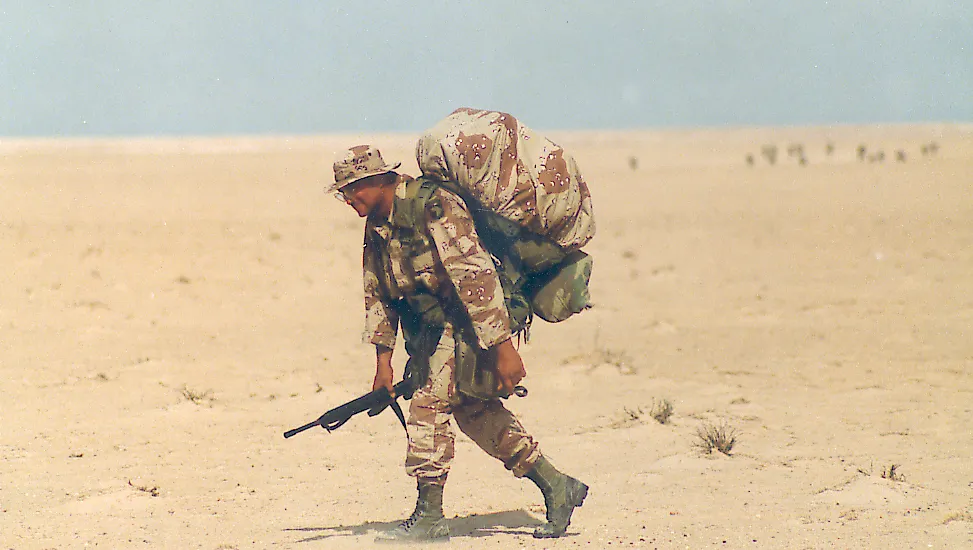January 16, 1991, marked the onset of a conflict that would dramatically reshape the geopolitical landscape of the Middle East and ripple through global politics – the Persian Gulf War. This war, also known as Operation Desert Storm, commenced with a massive U.S.-led air offensive against Iraq, following Iraq’s invasion of Kuwait. It was a war characterized by new military technologies, global alliances, and a shift in the balance of power in the post-Cold War era.
The Prelude to War:
The roots of the Persian Gulf War lay in a complex web of regional tensions, oil politics, and historical grievances. On August 2, 1990, Iraqi forces, under the command of President Saddam Hussein, invaded and annexed Kuwait, a small, oil-rich neighbor. This aggressive move was driven by economic woes, territorial ambitions, and long-standing border disputes.
Kuwait’s annexation sent shockwaves through the international community and triggered immediate condemnation. The United Nations Security Council passed resolutions demanding Iraq’s withdrawal and imposing economic sanctions. However, with Saddam Hussein refusing to back down, a coalition of 35 countries, led by the United States under President George H. W. Bush, assembled to force Iraq out of Kuwait.
Operation Desert Storm: A Technological Warfare:
The war officially began on January 16, 1991, with a massive aerial bombing campaign. Operation Desert Storm showcased the military might of the United States and its allies, along with the use of advanced technology in warfare. Precision-guided munitions, stealth aircraft, and satellite communications played a critical role, marking the conflict as one of the first to be heavily reliant on sophisticated technology.
The Ground Offensive and Iraq’s Retreat:
Following weeks of relentless air attacks, the coalition launched a ground offensive on February 24, 1991. The ground war was brief yet intense, lasting only 100 hours before President Bush declared a cease-fire. Iraqi forces were quickly overwhelmed and expelled from Kuwait, leading to the liberation of the small nation but at a devastating cost.

The War’s Aftermath and Global Implications:
The Persian Gulf War’s end saw a shift in the Middle East’s power dynamics. While the war was deemed a military success for the coalition, it
left a complex legacy. Iraq faced severe damage and years of economic sanctions, while Saddam Hussein’s regime remained in power, leading to further regional instability. The war also exposed the vulnerabilities of regional politics and the volatile nature of international oil markets.
The conflict had significant implications for U.S. foreign policy. It marked a turning point in America’s role as a global police force in the post-Cold War world. The war also set a precedent for future military interventions and the United States’ approach to the Middle East, particularly with regard to Iraq.
The Human Cost and the Media’s Role:
One of the most notable aspects of the Persian Gulf War was its coverage. It was one of the first conflicts to be broadcast live on television, with networks providing round-the-clock news coverage. This media presence brought the realities of war into living rooms around the world, shaping public perception and opinion.
However, the human cost of the war was immense. Civilian casualties, the environmental impact of burning oil fields, and the suffering caused by economic sanctions on Iraq painted a grim picture of the war’s toll on ordinary people.
Reflections on the Persian Gulf War:
As we look back on the Persian Gulf War, it stands as a reminder of the complexities of international relations and the consequences of military action. It was a conflict that not only liberated Kuwait but also set in motion a series of events that would continue to shape the Middle East and the world.
The legacy of the Persian Gulf War is multifaceted – it’s a story of military triumph, political maneuvering, human suffering, and a media spectacle. It remains a crucial chapter in understanding the dynamics of modern warfare, international alliances, and the ever-changing geopolitical landscape.
Conclusion:
The beginning of the Persian Gulf War on January 16, 1991, was more than just the start of a military campaign; it was the opening of a new chapter in global politics. It highlighted the changing nature of warfare, the power of coalition forces, and the lasting impact of conflict on nations and peoples. As we reflect on this pivotal moment, the Persian Gulf War continues to offer valuable lessons on the costs of war and the ongoing pursuit of peace and stability in a complex world.







What do you think?
Show comments / Leave a comment